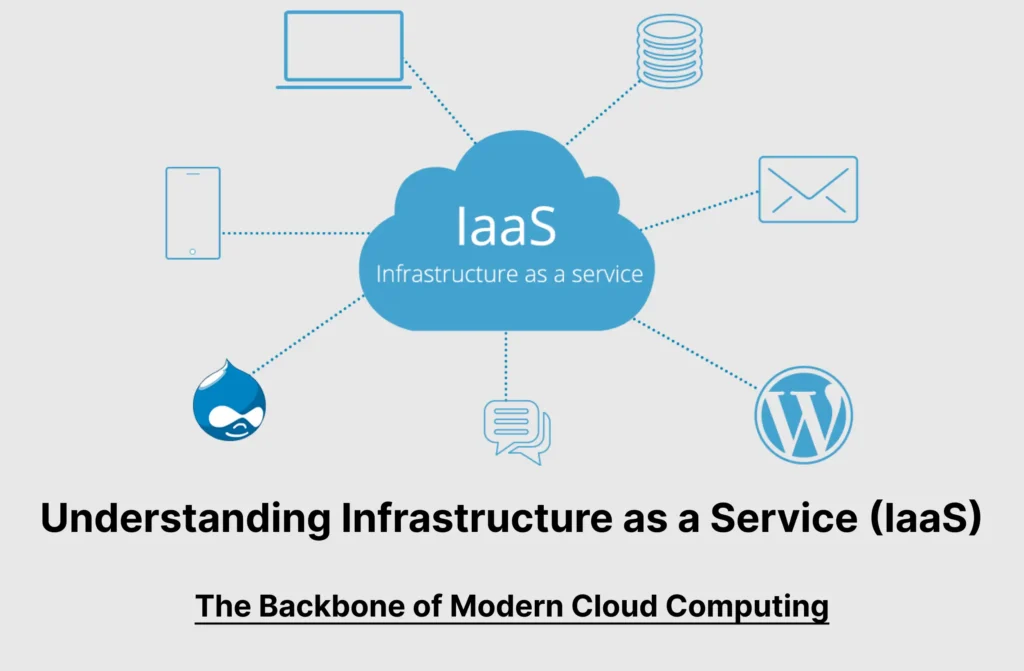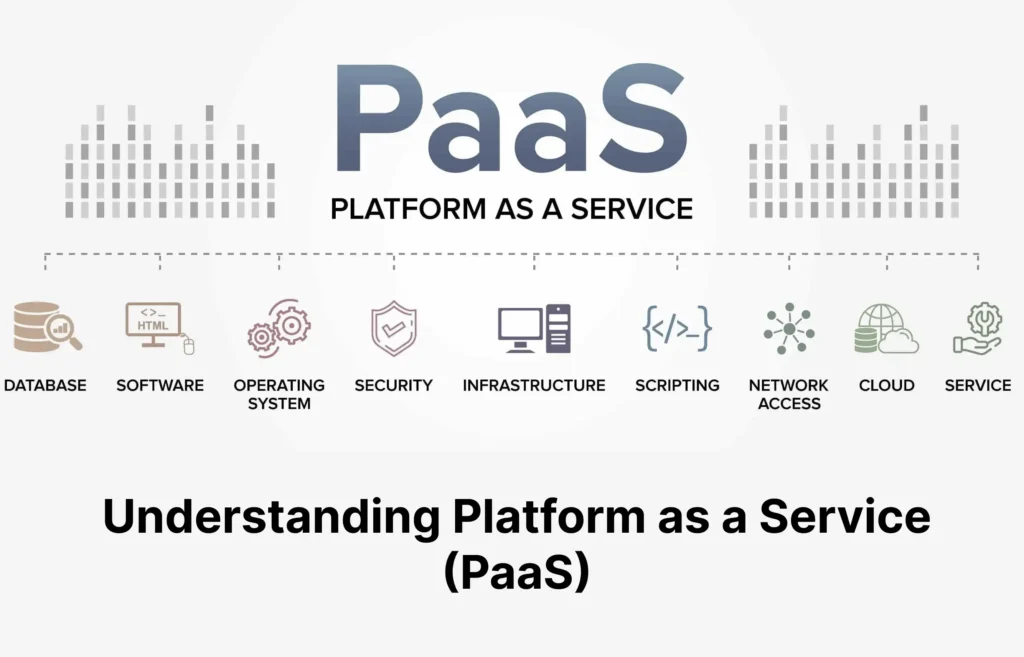Discover the essentials of Infrastructure as a Service (IaaS), a crucial component of the cloud computing ecosystem. Learn about its key characteristics, components, and architecture, and understand how it differs from other cloud service models like PaaS and SaaS. Explore the benefits of IaaS for businesses, including cost savings, scalability, and enhanced disaster recovery. Delve into the challenges and considerations of adopting IaaS, such as security, data privacy, and vendor lock-in, and uncover best practices for successful implementation.
Explore More Topics in: Technology Solutions
Also Read:
- Understanding Microsoft Azure and Microsoft 365 Subscriptions: A Comprehensive Guide
- Exploring Microsoft Azure: Services, Free Tier, and Subscription Options
- Understanding Software as a Service (SaaS): A Comprehensive Guide
- Understanding Platform as a Service (PaaS): A Comprehensive Guide
What is Infrastructure as a Service (IaaS)? / In Cloud Computing

Table of Contents
Infrastructure as a Service (IaaS) is a fundamental component of the cloud computing ecosystem. It provides virtualized computing resources over the internet, allowing businesses and individuals to leverage technology infrastructure without the need for physical hardware. Key characteristics of IaaS include on-demand availability, scalability, and a pay-as-you-go pricing model. These features enable users to dynamically scale their infrastructure based on demand, eliminating the need for substantial upfront investment in hardware and reducing operational costs.
IaaS differs from other cloud service models such as Platform as a Service (PaaS) and Software as a Service (SaaS). While IaaS provides the basic infrastructure, such as virtual machines, storage, and networks, PaaS offers a higher level of abstraction by providing a platform for developers to build, test, and deploy applications. On the other hand, SaaS delivers fully functional software applications over the internet, which end-users can access via a web browser.
For example: Amazon Web Services (AWS) offers IaaS with its Elastic Compute Cloud (EC2), Google App Engine exemplifies PaaS, and Microsoft Office 365 is a well-known SaaS offering.
The evolution of IaaS has been marked by several significant milestones. Initially, businesses relied on traditional data centers with physical servers, which required substantial maintenance and capital investment. The advent of virtualization technology in the early 2000s laid the groundwork for IaaS by enabling the creation of virtual machines, optimizing resource utilization, and reducing costs. The launch of AWS in 2006 marked a pivotal moment, making cloud infrastructure widely accessible. Since then, advancements in networking, storage, and compute power have continually enhanced the capabilities of IaaS, enabling it to support a wide array of applications and industries.
Today, IaaS remains a cornerstone of modern cloud computing, providing the flexibility and efficiency needed to support the rapid pace of technological innovation. By understanding its role and capabilities, businesses can make informed decisions about how to best utilize cloud resources to meet their unique needs.
Key Components and Architecture of IaaS
Infrastructure as a Service (IaaS) is a crucial layer of cloud computing that provides virtualized computing resources over the internet. The key components that form the backbone of IaaS include virtual machines (VMs), storage, networks, and load balancers. Each component plays a vital role in ensuring that the infrastructure is flexible, scalable, and efficient.
Virtual machines are the foundational element of IaaS, allowing users to run instances of operating systems and applications on virtualized hardware. These VMs can be easily scaled up or down based on demand, providing a high degree of flexibility. Storage in IaaS is typically offered in various forms such as block storage, object storage, and file storage, ensuring that data can be stored and retrieved efficiently.
Networking is another critical component, enabling communication between VMs and other resources. This includes virtual networks, subnets, and IP addressing. Load balancers distribute incoming traffic across multiple VMs to ensure optimal performance and reliability. By managing traffic effectively, load balancers prevent any single VM from becoming a bottleneck, enhancing the overall responsiveness of applications.
The architecture of IaaS revolves around virtualization and hypervisors. Virtualization abstracts the physical hardware, allowing multiple virtual instances to run on a single physical machine. Hypervisors, such as VMware ESXi, Microsoft Hyper-V, and KVM, manage these virtual instances, allocating resources like CPU, memory, and storage. This architecture ensures that resources are utilized efficiently and can be dynamically allocated based on demand.
Popular IaaS providers like Amazon Web Services (AWS), Microsoft Azure, and Google Cloud Platform (GCP) exemplify these principles. AWS offers services like EC2 for virtual machines and S3 for storage, while Azure provides VMs and Blob Storage. GCP’s Compute Engine and Cloud Storage are also prime examples of IaaS in action. These providers have built robust infrastructures that leverage the key components and architecture of IaaS to deliver reliable and scalable cloud services.
Benefits of Using IaaS for Businesses
Infrastructure as a Service (IaaS) offers numerous advantages to businesses, making it a critical component of modern cloud computing strategies. One of the primary benefits is cost savings. By transitioning from traditional on-premises infrastructure to IaaS, businesses can significantly reduce their capital expenditure (CapEx) as there is no need for heavy investment in physical hardware. Additionally, operational expenditure (OpEx) is minimized as maintenance, upgrades, and repairs are managed by the IaaS provider, allowing companies to allocate resources more efficiently.
IaaS also enhances business agility and flexibility. Companies can swiftly scale their infrastructure up or down based on demand, ensuring optimal resource utilization. This flexibility enables businesses to respond quickly to market changes and customer needs, fostering a competitive edge. Furthermore, IaaS supports improved disaster recovery and business continuity. With data and applications hosted in the cloud, businesses can quickly recover from disruptions, ensuring minimal downtime and maintaining productivity.
Scalability and performance are other significant advantages of IaaS. Businesses can take advantage of the robust infrastructure provided by IaaS vendors, which often includes the latest technology and high-performance computing resources. This ensures that applications run smoothly and efficiently, even during peak usage periods. Additionally, IaaS empowers businesses to innovate faster. By offloading the management of underlying infrastructure to the service provider, companies can concentrate on their core competencies and strategic initiatives, driving innovation and growth.
Several companies have successfully leveraged IaaS to achieve these benefits. For instance, Netflix utilizes IaaS to handle its massive streaming service, allowing it to scale dynamically based on viewer demand. Similarly, Airbnb relies on IaaS to manage its platform, ensuring seamless performance and availability for millions of users worldwide. These case studies exemplify how IaaS can transform business operations, providing a solid foundation for growth and innovation.
Challenges and Considerations in Adopting IaaS
Adopting Infrastructure as a Service (IaaS) offers numerous advantages, but it also presents a series of challenges and considerations that businesses must navigate. One primary concern is security and compliance. As organizations move their infrastructure to the cloud, they must ensure that their security protocols are as robust as those in their on-premises environments. This includes implementing strong encryption methods, regular security audits, and compliance with relevant regulations such as GDPR or HIPAA.
Data privacy is another critical issue. Businesses need to be vigilant about where their data is stored and processed. Ensuring that data privacy policies are in place and adhered to can mitigate risks associated with data breaches or unauthorized access. Understanding the data sovereignty laws of the regions where data is stored is likewise essential to avoid legal complications.
Potential vendor lock-in is a significant consideration. Once a business selects a particular IaaS provider, migrating to another provider can be complex and costly. To reduce the risk of vendor lock-in, companies should seek out IaaS providers that support open standards and offer flexible contract terms. Additionally, maintaining a multi-cloud strategy can provide more options and reduce dependency on any single vendor.
The need for skilled personnel is another challenge. Managing and optimizing IaaS environments requires expertise in cloud technologies. Investing in the training and development of IT staff is critical. Businesses should ensure their teams are proficient in cloud management, security practices, and cost optimization techniques.
To mitigate these challenges, businesses should follow best practices. Implementing robust security measures, conducting thorough vendor assessments, and investing in continuous learning for IT staff are crucial steps. Moreover, developing a well-defined cloud strategy that aligns with business goals can ensure a successful adoption of IaaS. This strategy should include clear objectives, risk management plans, and a comprehensive understanding of the costs involved.





Pingback: Mastering the CompTIA Cloud Essentials+ (CLO-002): Complete Guide to Key Chapters, Cloud Strategies, and Career Benefits